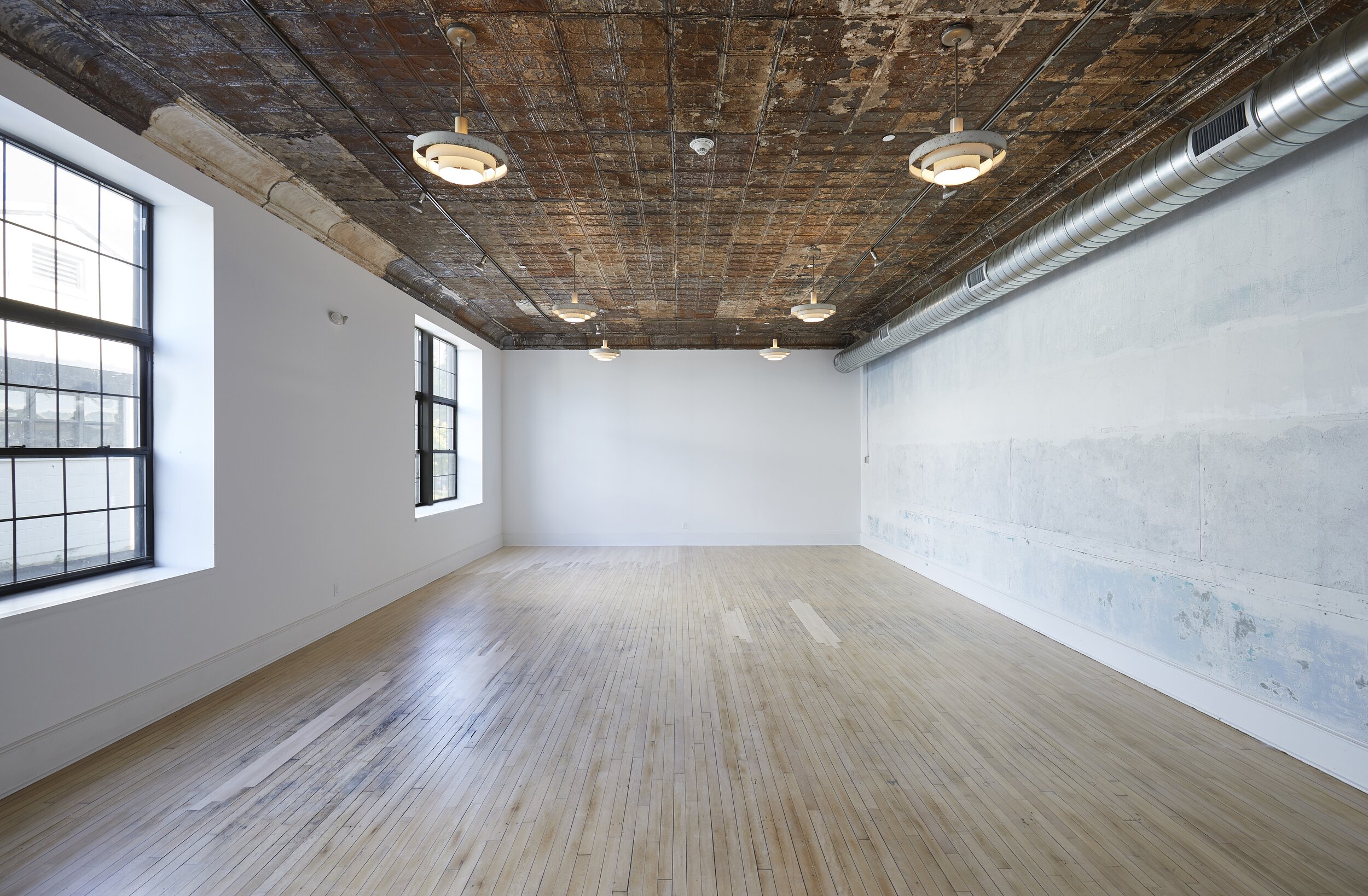
GALLERY 1
Kikuo Saito:
Pictorial Clay
Curated by Jim Walsh
4 Mar. – 7 May 2023
Kikuo Saito completed two cycles of pictorial ceramic wall plaques at the Clayworks Studio in Lower Manhattan in 1980 and 1984.
As a young artist while still in Japan, Saito had the opportunity to make raku pots, but otherwise had little exposure to working with ceramics.
At Clayworks, Saito was provided with fresh wet clay slabs that were about three quarters of an inch thick and roughly two by two feet. He incised, gouged and gently folded edges of the slabs, taking advantage of the differences in the clay as it dried to make a variety of marks and cuts. As his work continued, Saito applied liquid clay slips and glazes.
Several of the initial slabs exemplified reference to Saito’s painting at the time: that of a field of spread color, observably hand-applied via a tool or blade, and a field that embraced an active and richly colored interior division or chunk of raw canvas with strikingly bright colors in a chordal dance. This signature approach enabled a Saito painting to be instantly recognizable. Autumn Arrow (1980), for example, is characteristic of the paintings that he was making at the time.
As Saito grew more intimate with the workings of clay, a delicate, subtle approach began to take hold. He had embraced the material without any difficulty, and he permitted his curiosity about the potential of the clay to emerge. Saito began working on the clay slabs in a manner that invoked his paintings, but, given the pliant nature of the clay and its invitation for exploration, he began to expand his vocabulary. As Saito worked, the imagery now began to disperse across the surface of the slab, as elements of the drawing (the drawing being created with tools or with finger marks that were pressed into the clay) came to inhabit all the territory of the squares or rectangles of the wet clay as he saw fit.
The outcome of that expansion and inquiry on the clay slabs can be seen translated to paintings on canvas that Saito makes in years to follow. Monk’s Circle (1987), included in the exhibition, gives some notion of that influence. In Monk’s Circle, inflections of color now pepper the surface, as they widen the catchment of our visual field, the entirety of the surface is whispered into being, hovering in a weathering space. A reminding realization that what is before us exists for a moment, then flickers and is gone.
The clay pieces that Kikuo Saito completed forty years ago are, in part, a confirmation of his ongoing painting at the time, as well as an improvisational exploration of what comes later. The leap from paint to clay seemed natural for Saito. The transition of the wet, primal clay from mud to durable hardness rang familiar to the subtle shift in the value change of color of thickened acrylic from the wet to dry state.
Saito’s Pictorial Clay pieces are engagements of his reflective expression and stand on their own and in harmony with his more well-known works.
PROCESS
The finished clay slabs that Saito worked on were slowly dried over a period of weeks with plastic sheeting removed and replaced at intervals to ensure proper release of moisture. When completely dry, the slabs were transferred to a gas-fired kiln and fired to a temperature of approximately 1945 degrees Fahrenheit. To ensure that the increase of temperature during the firing process did not cause warpage or cracking, the pieces were fired flat on kiln shelves that had been sprinkled with grog, a sand-like aggregate of previously fired bits of clay that allowed for mobility of the slabs during the slow rise of temperature.
Kikuo Saito, Winter Step (1984), Stoneware, 20¾″ H × 20½″ W

